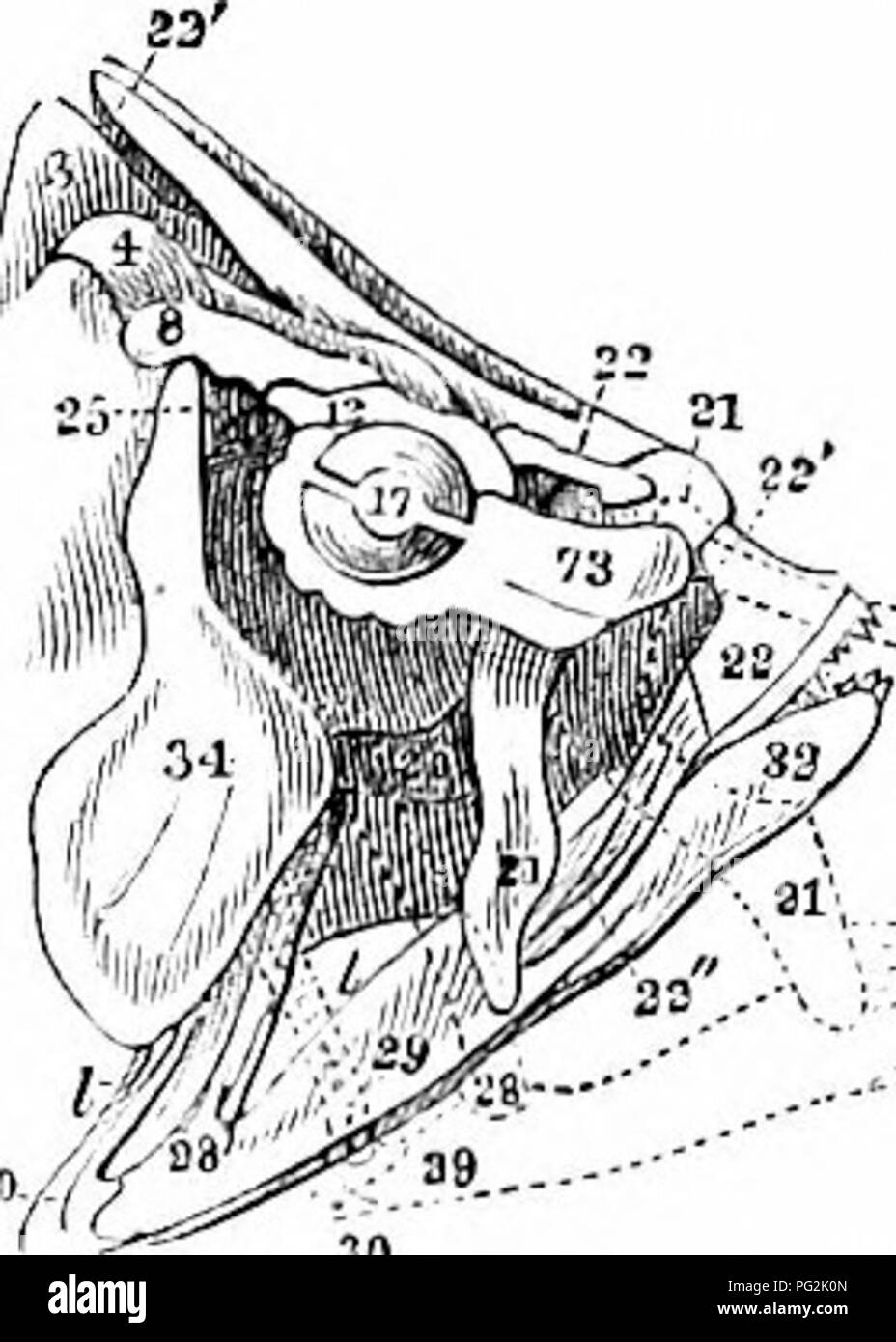. On the anatomy of vertebrates. Vertebrates; Anatomy, Comparative; 1866. ANATOMY OF VERTEBRATES. 119 and immovably articulated with tlie prenasal and maxillary bones, in both the Sword-fish and the Garpike. The premaxillaries are commonly more extended in the transverse than in the vertical direction; but there are many examples in Fishes where their de- velopement is equal in both directions. The vertical extension, which forms the nasal branch of the premaxillary, is of unusual length in the fishes with protractile snouts, as, for example, in the Picarels {Blenidce), the Dories (Zeus), and

Image details
Contributor:
Central Historic Books / Alamy Stock PhotoImage ID:
PG2K0NFile size:
7.1 MB (269.9 KB Compressed download)Releases:
Model - no | Property - noDo I need a release?Dimensions:
1336 x 1870 px | 22.6 x 31.7 cm | 8.9 x 12.5 inches | 150dpiMore information:
This image is a public domain image, which means either that copyright has expired in the image or the copyright holder has waived their copyright. Alamy charges you a fee for access to the high resolution copy of the image.
This image could have imperfections as it’s either historical or reportage.
. On the anatomy of vertebrates. Vertebrates; Anatomy, Comparative; 1866. ANATOMY OF VERTEBRATES. 119 and immovably articulated with tlie prenasal and maxillary bones, in both the Sword-fish and the Garpike. The premaxillaries are commonly more extended in the transverse than in the vertical direction; but there are many examples in Fishes where their de- velopement is equal in both directions. The vertical extension, which forms the nasal branch of the premaxillary, is of unusual length in the fishes with protractile snouts, as, for example, in the Picarels {Blenidce), the Dories (Zeus), and in certain Wrasses, as Coricus, and especially the Epibulus, or Sparus insidiator of Pallas, fig. 87, 22. In this fish the nasal branch of the inter- maxillary, ib. 22', plays in a groove on the upper surface of the skull, and /;, ^^^. S7 reaches as far back as the occiput when the mouth is retracted. The descend- ing or maxillary branch is attached by a ligament, ib. 22", longer than itself, to the lower end of the maxil- lary bone, ib. 21, and consequently draws forward that bone, together with the lower jaw, to which the same end Mtrinm mnf riotrictiomninetnction 01 the maxillary is attached by liga- ment, when the long nasal branch of the premaxillary glides forward out of the epicranial groove. The protractile action is further favoured by a peculiar modification of the hypotympanic, ib. 28, which, by its great length and movaljle articulation at both ends, cooperates with the long premaxillary in the sudden projection of the mouth, by which this fish seizes the small, agile, aquatic insects that constitute its prey. In the Lopliius the nasal 2")rocesses of the premaxillaries enter a groove in the frontal: in the Uranoscopus they also reach the frontal, playing upon the small nasal bone and pressing it down, as it were, upon the vomer. In the Dactylopterus they penetrate between the nasal and the vomer, and play in the cavity of the rhinencephalic arch. The diverg